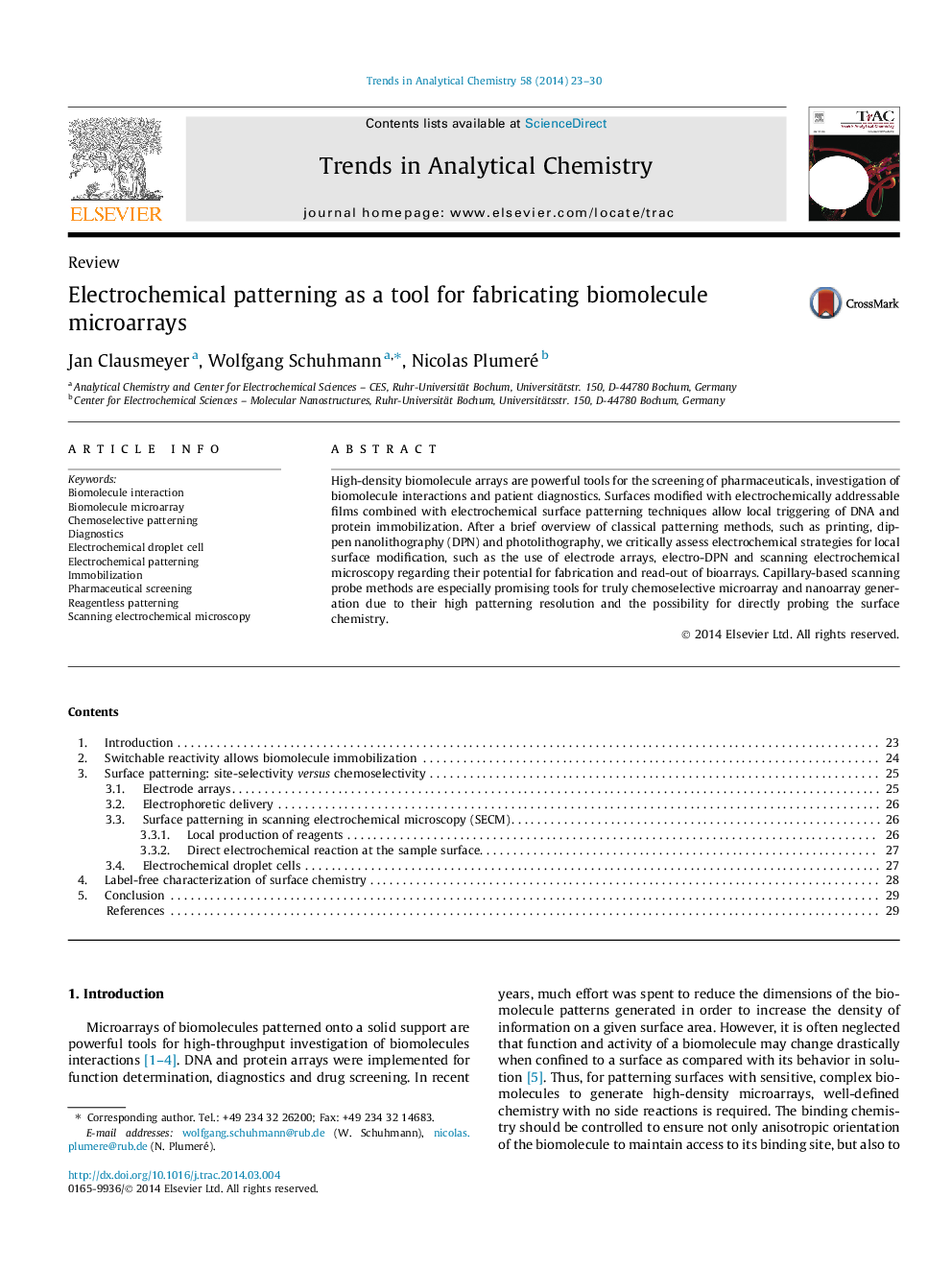| Article ID | Journal | Published Year | Pages | File Type |
|---|---|---|---|---|
| 1247810 | TrAC Trends in Analytical Chemistry | 2014 | 8 Pages |
•Controlled biomolecule immobilization can be triggered electrochemically.•Scanning electrochemical microscopy allows writing and reading of bioarrays.•Electrochemical droplet cells assure reagentless and truly chemoselective patterning.
High-density biomolecule arrays are powerful tools for the screening of pharmaceuticals, investigation of biomolecule interactions and patient diagnostics. Surfaces modified with electrochemically addressable films combined with electrochemical surface patterning techniques allow local triggering of DNA and protein immobilization. After a brief overview of classical patterning methods, such as printing, dip-pen nanolithography (DPN) and photolithography, we critically assess electrochemical strategies for local surface modification, such as the use of electrode arrays, electro-DPN and scanning electrochemical microscopy regarding their potential for fabrication and read-out of bioarrays. Capillary-based scanning probe methods are especially promising tools for truly chemoselective microarray and nanoarray generation due to their high patterning resolution and the possibility for directly probing the surface chemistry.
